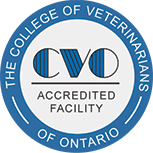
Internal parasites are one of the most limiting factors to successful optimization of horse health throughout the world. All horses at pasture are infected by internal parasites. Fortunately, horses in North America benefit from superior care, feed and de-worming protocols that minimize parasite risk. Despite this our parasite control and management strategies often fall short – and many questions remain.
For a review of the basics, worms can be divided into groups of minor or major pathogens the latter being of most concern. Large strongyles in past years were commonly seen in the manure after de-worming. Recently, more important changes in the parasite fauna of horses have occurred and large strongyles are rare. Small strongyles (Cyathostomes) are emerging as the number one parasite of concern in the domestic equine. Adult horses vary greatly in their innate susceptibility to small strongyles, and in this thought that their immune systems play a role in this. Different individuals are also through to be chronic high egg shedders despite proper de-worming protocols.
Tapeworms, difficult to detect with fecal egg counts (FEC) are an insidious enemy to horse health and in large numbers can cause fatal impactions. The most effective drug to use against tapeworm is praziquantal. Bot worms, red grub like worms that colonize the stomach lining, are present wherever bot flies lay their yellow eggs on horses in late summer. Over years they can build up to large numbers in the stomach if the animals do not receive a “boticide” de-wormer after the first frost each year. The most common boticides are Ivermectin and Moxidectin. Never use a purgative or insecticide for a bot wormer (Dichlorvos) particularly on an Arabian, as colic is a common result.
Minor parasites worth mentioning are pinworms and lungworms .Pinworms lay their eggs around the horse’s anus, causing intense itchiness. Therefore foals are very susceptible to infection by mouthing around buckets and feed tubs where adult horses have been scratching. Lungworms can occasionally be found where donkeys and horses are housed together, particularly in wet areas, and can cause a cough.
The age of the horse also factors into planning a good de-worming program, as foals are most often infected with roundworms ( ascarids) and threadworms ( Strongyloides westeri) Foals therefore need specialized de-worming protocols. They become infected with small strongyles at around 5 – 6 months of age.
The clinical signs of parasitism are well known and common to all age groups. A failure to thrive is manifest by poor body condition or growth, a pot belly, a long dull hair coat and sometimes chronic diarrhea. In severe cases of strongyle infection colic can occur as a result of larval migration through the blood vessels of the intestine.
Many horse owners have questions for their veterinarians about de-wormer resistance. Only recently have animal parasitologists developed an understanding of how de-worming for three decades with our commonly used products, particularly Ivermectin, has affected parasite populations. De-worming strategies developed 40 years ago for large strongyles have not proven successful for Cyathostomes; in fact substantial resistance has now been recognized.
The concept of “Refugia” is complex but well worth understanding. A relatively new term, Refugia refers to the population of internal parasites that escapes selection with a parasiticide drug at the time of treatment. The worms in refugia are thereby selected for resistance. A portion of all parasite stages, including eggs and larva and those on pasture, are in refugia. Resistant worms and their life stages are diluted by susceptible worms and their life stages on pasture. Consequently, the old practice of “dose and move” has come into question as that dilution effect will be negated, allowing new pastures to be colonized solely by resistant populations and their offspring. Understanding of dewormer resistance has led parasitologists to advise that deworming frequently be kept to a minimum when pasture refugia is low, such as in winter or drought conditions to slow the development of resistance.
Detection of resistance is based on fecal egg counts reductions. FECs should be conducted both before and 14 days after deworming on each pasture group during the summer months.
It is also important for horse owners to know their products and the specific parasites they target when choosing a dewormer. Tools still considered very important are harrowing , picking and rotating pastures regularly and feeding hay off the ground. Of all the management tools at our disposal, however, fecal egg counts are the most underutilized.
External parasites worthy of mention are lice (older horses in the spring), mange and ticks. Mange is specific to several breeds, particularly Clydesdales and Icelandic horses. Ticks can cause a local reaction in the horse but not typically Lyme disease. A common misconception is that oral Ivermectin will kill these parasites. Use of a topical insecticide powder is the most common and cost- effective treatment, and the off-label use of cattle Pour-On Ivomec has also had some success.
In summary, every horse owner should update their deworming protocols with the help of their veterinarian. Education on the products used for different parasites and their life stages is important. Decreased winter worming, an annual tapeworm treatment and more frequent fecal egg counts are all part of worming strategies that are currently evolving. Don’t forget to consult with a veterinarian on how to treat a sick, unthrifty or obviously parasitized horse for worms.
While deworming principles and products remain largely the same our knowledge on how to use them has evolved – leading us to a better understanding on how to manage internal parasites in the horse and slow the development of dewormer resistance. Your
veterinarian and veterinary parasitologist are working together to help you help your horse.


